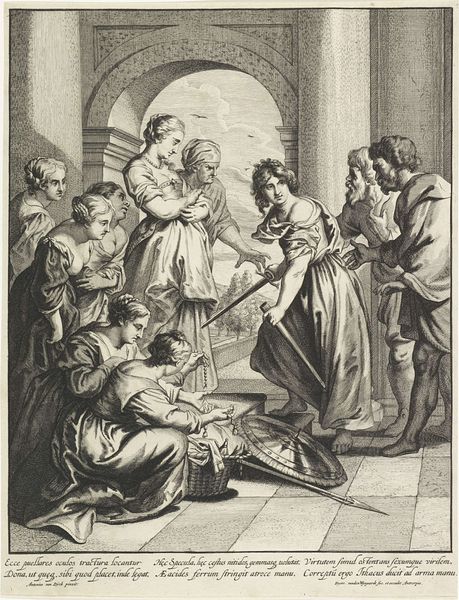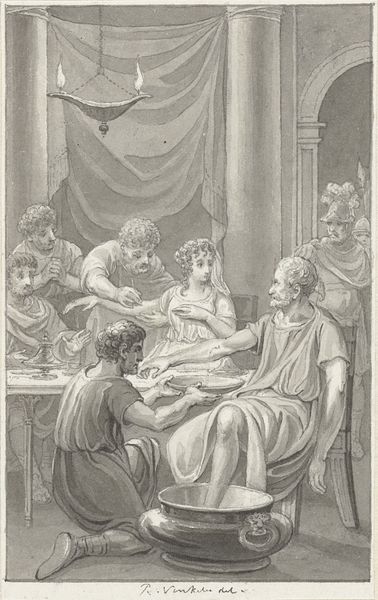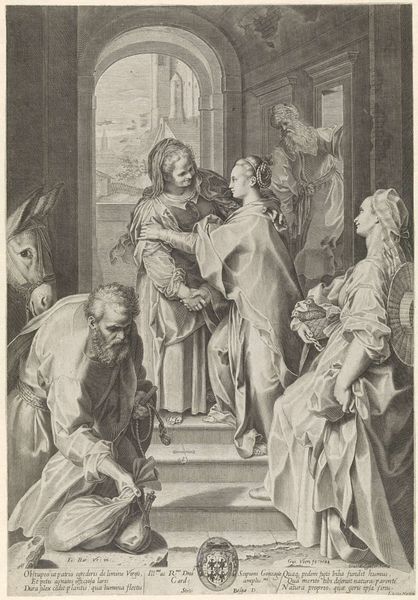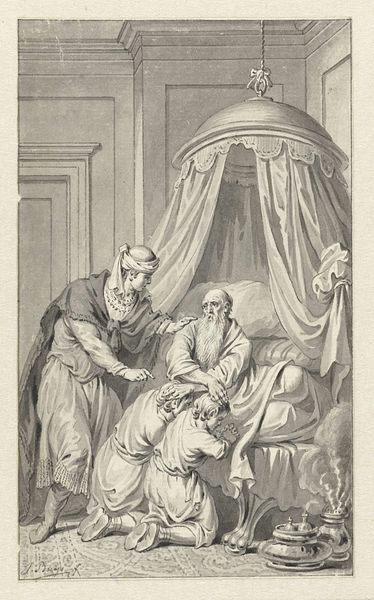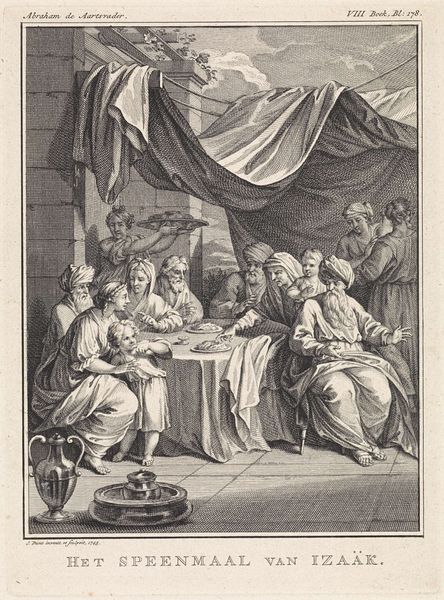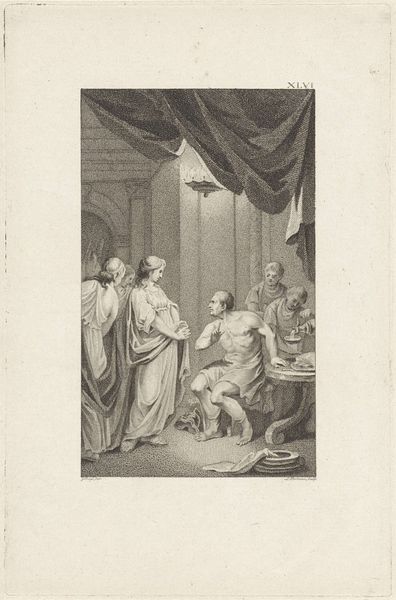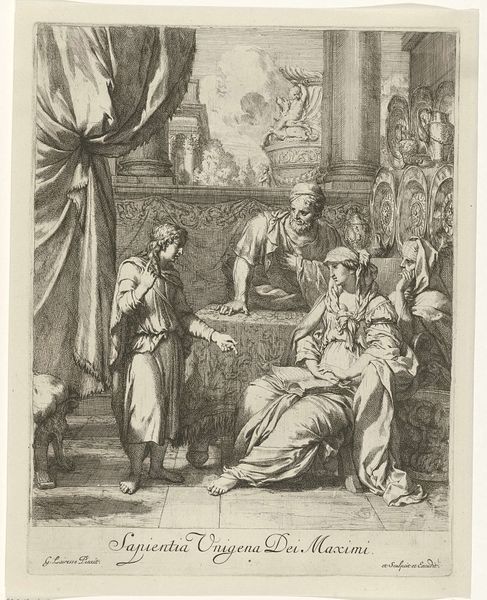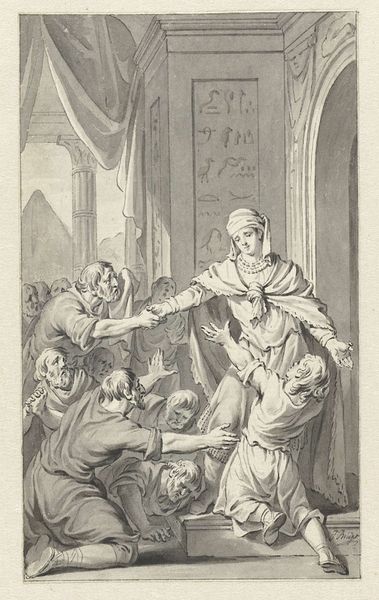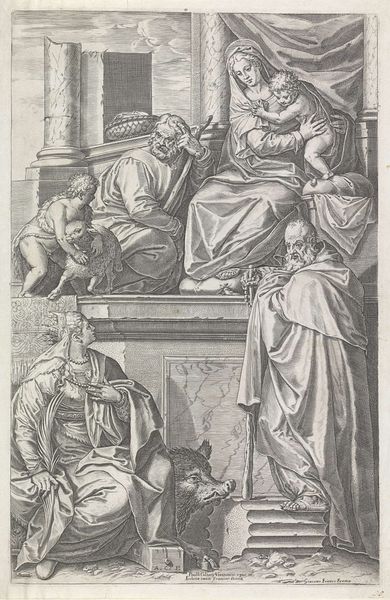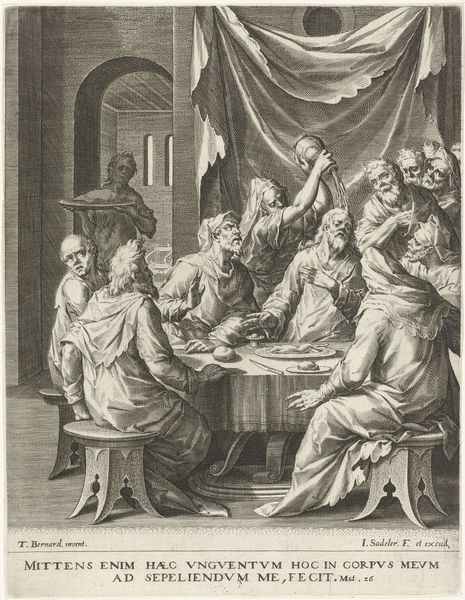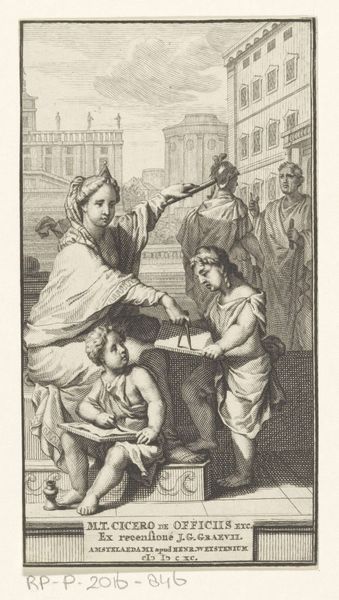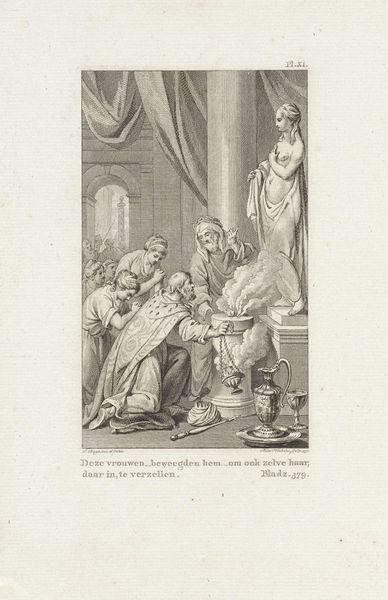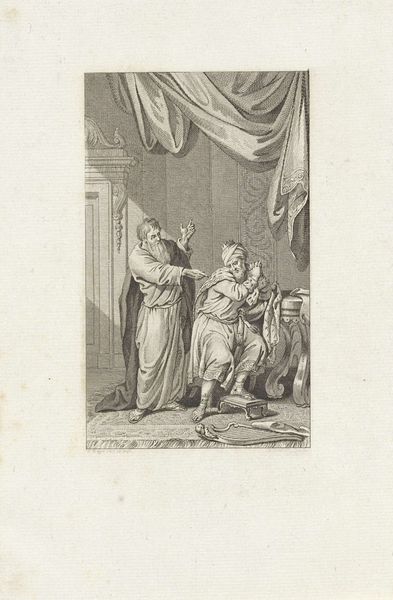
Dimensions: height 150 mm, width 89 mm
Copyright: Rijks Museum: Open Domain
Curator: The Rijksmuseum holds this pen and ink drawing entitled "Samson and Delilah," created by Jacobus Buys in the late 18th century. What strikes you most about it? Editor: Well, immediately the theatrical lighting, the somewhat stagey composition, and the figures arranged within the proscenium suggest drama, heightened by the almost operatic emotionality of the characters. Curator: Absolutely, the piece captures a pivotal moment from the Old Testament. Delilah, having lulled Samson to sleep, betrays him to the Philistines by cutting his hair, the source of his strength. It is interesting that it dates from around 1734-1801 because it is somewhat baroque in subject matter and style, yet a lot later than the baroque. Editor: The artist really focuses our attention on the texture and tonality, guiding us from Delilah's poised figure to the helpless form of Samson. See how his muscles are rendered to emphasize his vulnerability in that specific moment? Curator: It is also clear the influence this scene, fraught with questions of power and national allegiance, had in its own era, speaking to ongoing imperial contestations of the late 1700s. It's also very concerned with historical costume. Editor: There's a palpable sense of tension, achieved mostly through the carefully placed areas of contrasting light and dark that lead the eye toward the dramatic, if not grisly, moment. I am wondering though if, despite the heavy themes here, Jacobus is somewhat detached or perhaps moralizing this episode of treason. The classical architecture feels oddly sterile. Curator: I wonder too. Despite its grand historical theme, one gets the sense that the picture, like so many biblical narratives of its time, really serves the purpose of addressing local domestic values. Editor: An artful rendering with sharp detail and powerful emotion; though, what are we to truly make of the betrayal represented here? The art lies perhaps not just in the details but the ambiguity. Curator: It allows a look at a famous historical episode filtered through the aesthetic and moral considerations of its time. What resonates for me, upon further viewing, is the universal tension between personal and political loyalties, the visuality that underscores an emotional exchange, making a rich study of internal and public pressures.
Comments
No comments
Be the first to comment and join the conversation on the ultimate creative platform.
